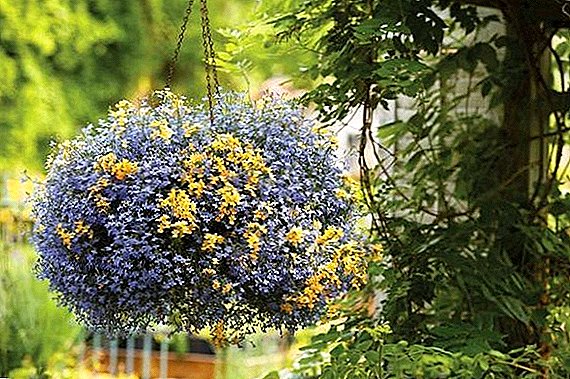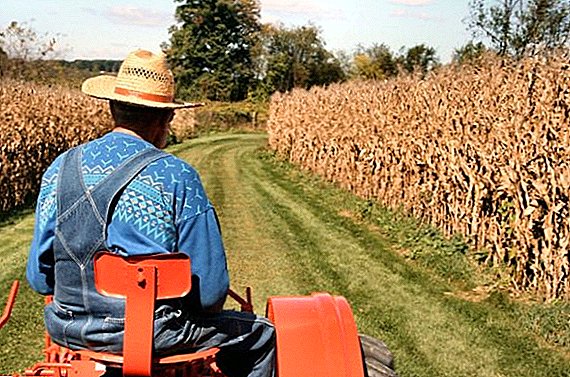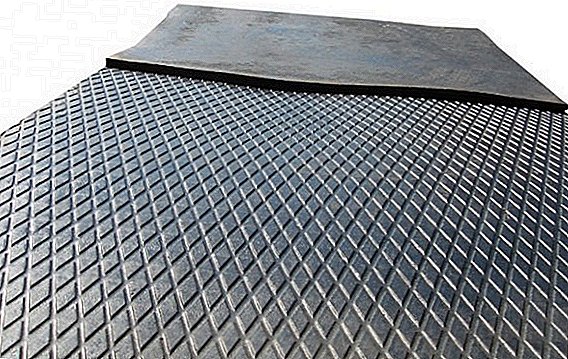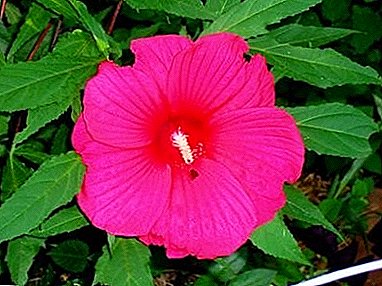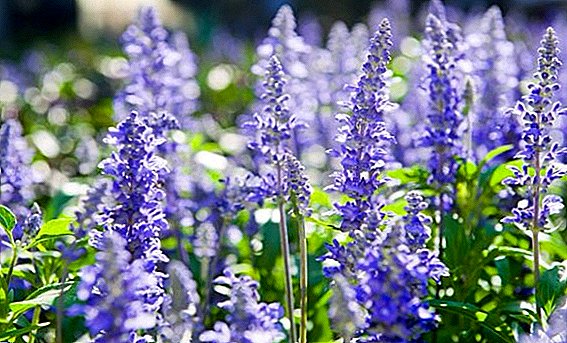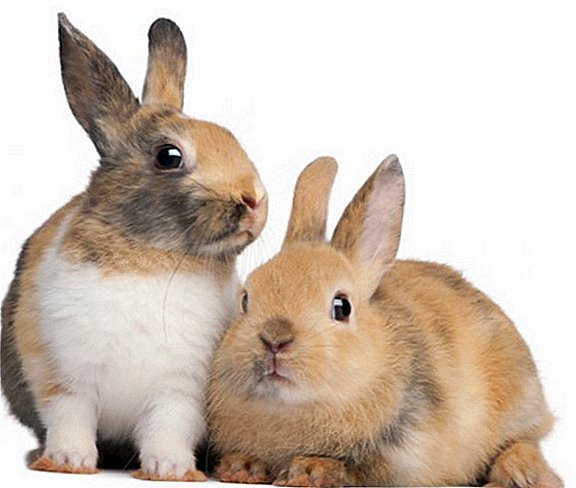 In addition to dry food, chickens need fresh green herbs, which are a natural source of almost all the vitamins that birds need. Nevertheless, not all plants are favorable for the health of birds. Therefore, any poultry farmer needs to understand the grasses, their types and characteristics, so that feeding and walking of the birds will only benefit them.
In addition to dry food, chickens need fresh green herbs, which are a natural source of almost all the vitamins that birds need. Nevertheless, not all plants are favorable for the health of birds. Therefore, any poultry farmer needs to understand the grasses, their types and characteristics, so that feeding and walking of the birds will only benefit them.
Useful properties of grass for chickens
Succulent green food has a positive effect on the health of birds, which is expressed, in particular, in bright color of egg yolk.  In the warm season, in addition to fodder carrots, beets, Jerusalem artichoke and other popular garden plants, it is worth giving the hens fresh green grass, or to provide them with free access to it.
In the warm season, in addition to fodder carrots, beets, Jerusalem artichoke and other popular garden plants, it is worth giving the hens fresh green grass, or to provide them with free access to it.
Important! In the summer, the daily rate of herbs in the diet of chickens can reach 50%, and some poultry farmers increase it to 60%.
However, the benefits of a particular species for poultry may be different, therefore, poultry farmers recommend carefully studying the vegetation in the area of walking.
- Grains and leguminous crops, in particular peas, clover, alfalfa and oats are considered the most useful for chickens.
- With the onset of spring and in summer, the birds very much like nettle leaves that are crushed and scalded with boiling water (it is best to mix them with bran and grain mixture).
- If possible, prepare herbs of clover, dandelions and pigtails. Each of these herbs has a rich vitamin composition, the effect of which is noticeable even in the appearance of birds: the feathers become shiny, the chicken has a healthy appearance.
- Some herbs can improve vision (eg, alfalfa).
- Others contribute to higher productivity (wheat germinated grains are rich in vitamin E).
- In sorrel there is a large amount of vitamin C, and clover and alfalfa can boast of protein richness.
- The herb helps to get rid of chicken parasites: tansy and yarrow banish worms.


Learn more about the properties and use of peas, clover, dandelion, alfalfa, tansy, yarrow.
Herbs that can be given to chickens
In addition to the already mentioned vegetation, there is quite a bit different, which not only can, but also need to be fed to chickens for their well-being and high productivity.
To the special "delicacies", growing in the wild nature, should include:
- quinoa;
- horse sorrel;
- pine needles and spruce;
- weeds (silage and hay);
- plantain;
- alfalfa;
- dandelion;
- wood louse (perfectly strengthens the skeleton);
- spurge;
- wheat grass;
- hawthorn and wild rose fruits;
- chestnut and rowan leaves.












Read also about the healing properties of quinoa, horse sorrel, large plantain, woodlice, milkweed, wheatgrass, hawthorn, dogrose, chestnut, mountain ash red.
Chickens will not refuse vegetable crops and their leaf parts. These include:
- salad;
- pumpkin;
- cucumbers;
- zucchini;
- carrot;
- parsley;
- cereal leaves;
- onion feathers;
- cabbage sheets.









If you are sure that only healthy herbs grow on the plot, then you can safely produce chickens, they will find their favorite vegetation themselves.
It is interesting to read about the properties, culinary and therapeutic use of lettuce, pumpkin, cucumbers, zucchini, carrots, parsley, green onions, white cabbage.
Herbs that are strictly banned
Despite the opinion of some poultry farmers, you should not trust the choice of grass only chicken. The statement that the birds themselves know about the benefits or harms of a particular vegetation is very exaggerated - birds often peck poisonous plants for them. As we have said, before walking the chickens should carefully inspect the site.
It should not be:
- juniper;
- a cockle;
- hemlock;
- belles
- broom;
- spotted hemlock;
- black hairy;
- potato inflorescences;
- elderberry;
- hellebore;
- pear leaves and white acacia.











All these plants in varying degrees, affect the health of the birds, and if some just cause an upset stomach, others may well provoke the death of birds.
Did you know? Buttercup caustic, or "night blindness", has nothing to do with chickens, or with a real disease under this name. Simply, if you rub your eyes after contact with its juice, they immediately turn red and begin to water. Some villages still consider this yellow flower dangerous to chickens, which is not surprising, given its toxic properties. In fact, it is harmless to poultry.
Feeding "babies"
Like human children, small chickens do not have adequate immunity, so external adverse factors may well be the cause of the development of any disease. To protect the young livestock, it is very important to monitor the nutrition of "kids", in particular, when choosing greens.
From what age can you feed greens
As a rule, experienced poultry farmers introduce greens into the diet of chickens towards the end of the first week of their life (for example, from the fifth day), but there are also farmers who declare the possibility of feeding "babies" from the first day after birth. When choosing the right power scheme it is important to focus on the following green rate per day:
- age 0-5 days - 1 g per day per chicken;
- 6-10 days - 3 g;
- 11-20 days - 7 g;
- 21-30 days - 10 g;
- 31-40 days -15 g;
- 41-50 days - 17 g.
 Of course, all greens intended for chickens should be pre-washed and finely chopped so that the fragile stomach can digest it well. As an additional treatment, you can pour boiling water over the grass. All preparatory activities should be carried out before direct feeding of the young.
Of course, all greens intended for chickens should be pre-washed and finely chopped so that the fragile stomach can digest it well. As an additional treatment, you can pour boiling water over the grass. All preparatory activities should be carried out before direct feeding of the young.
Important! The longer the mowed grass will lie in the attic, the less vitamins will remain in it, so when feeding the chickens it is important to give only fresh-cut greens, adding to the mash or pouring into the feeders separately.
What greens can feed chickens
From an early age, small chickens eat nettle very well. They also love dandelion, lettuce, green onions, clover, plantain. All of these plants, in addition to the pleasant taste for the birds, have a number of beneficial properties - from improving digestion to strengthening the body's defenses and its saturation with protein (it is contained in sufficient quantity in clover).  To prevent chicks appearing in winter from suffering from vitamin deficiency, it is advisable harvest grass since summer, tying the collected greens in bunches and hanging in a dry ventilated room for further drying. In winter, dried greens are crushed and mixed into wet masters.
To prevent chicks appearing in winter from suffering from vitamin deficiency, it is advisable harvest grass since summer, tying the collected greens in bunches and hanging in a dry ventilated room for further drying. In winter, dried greens are crushed and mixed into wet masters.
Learn more about the features of use in the feed of chickens feed, bread, fish oil, live food.
Needles as medicine for chickens
Novice poultry farmers use the needles for feeding chickens may seem like an unsuccessful undertaking, but in fact the fir needles will bring considerable benefits to the feathered, it is worthwhile to only prepare them correctly.
Pine needles contain many useful and nutrients. Quantity per 1 kg:
- carotene - 60-130 mg;
- Vitamin C - 3000 mg;
- vitamin K - 20 mg;
- Vitamin B2 - 5 mg.
Spruce needles are slightly less useful, since the components are distributed in the following ratio:
- carotene - 50-120 mg;
- Vitamin C - 2500 mg;
- vitamin K - 12 mg;
- Vitamin B2 - 5 mg.

How to prepare the needles
Needles of pine or spruce any farm animals eat with pleasure, although the young chickens and chickens do not immediately recognize her. The bird is given pine needles, both dry and fresh, but in each of these cases the workpiece has the same features:
- After cutting pine branches, they should be placed in a warm, dry room on racks made of metal mesh. Under the design, you can spread an oilcloth or cellophane, so that after a few days it was easier to collect the showered needles.
- Both pine and spruce needles are engaged in harvesting starting from November and ending in mid-March, since it is at this time that it contains the least amount of essential oils.
- Collected needles are usually crushed and poured into glass containers, tightly closing them with lids.
Did you know? Record for the length of the needles is considered to be marsh pine, because its needles can reach 45 centimeters in length.
How to cook a "healing" food
Chickens are more likely to eat needles if pre-grind. For these purposes, use a coffee grinder (if we are talking about pre-cut spruce branches with needles), or pass through a mechanical meat grinder (it is more suitable for grinding pine branches). In addition, cut branches can be placed on a baking sheet and sent to the oven for half an hour, so that the needles crumble faster.
In a crushed form, they can be mixed into mash, or they can be given on their own, adhering to the daily standard for birds of a certain age.
If desired, you can burn needles and cook chickens "bath" of its ash. Of course, in this case there will be practically no vitamins left, but all the necessary elements can be found. Chickens will be able to receive them, in particular, by eating up grains that fell into the ashes.
Video: harvesting needles for chickens
How to feed the needles
The needles of pine or spruce branches will bring the maximum benefit to the bird in winter, because it is during this period that it contains the maximum of useful substances, with a minimum of essential oils that are not distinguished by great benefits for the bird.
The optimal dosage of shredded needles for adult chickens is 6-10 g per individual per day, but it is better for young animals to introduce it into the diet in stages, starting with 2-3% of the total amount of feed.
As for the method of feeding, the needles will be best absorbed in combination with a wet flour mash, but often for adult chickens they give it in pure form or in combination with dry feed, stirring with them until a homogeneous composition.  As we see, both greens and needles will be useful to chickens of any age. The main thing - to properly prepare them, avoiding poisonous plants. If you doubt the benefits of grass growing on the hill, it is better to remove it, giving the hens only that which they are sure of.
As we see, both greens and needles will be useful to chickens of any age. The main thing - to properly prepare them, avoiding poisonous plants. If you doubt the benefits of grass growing on the hill, it is better to remove it, giving the hens only that which they are sure of.


